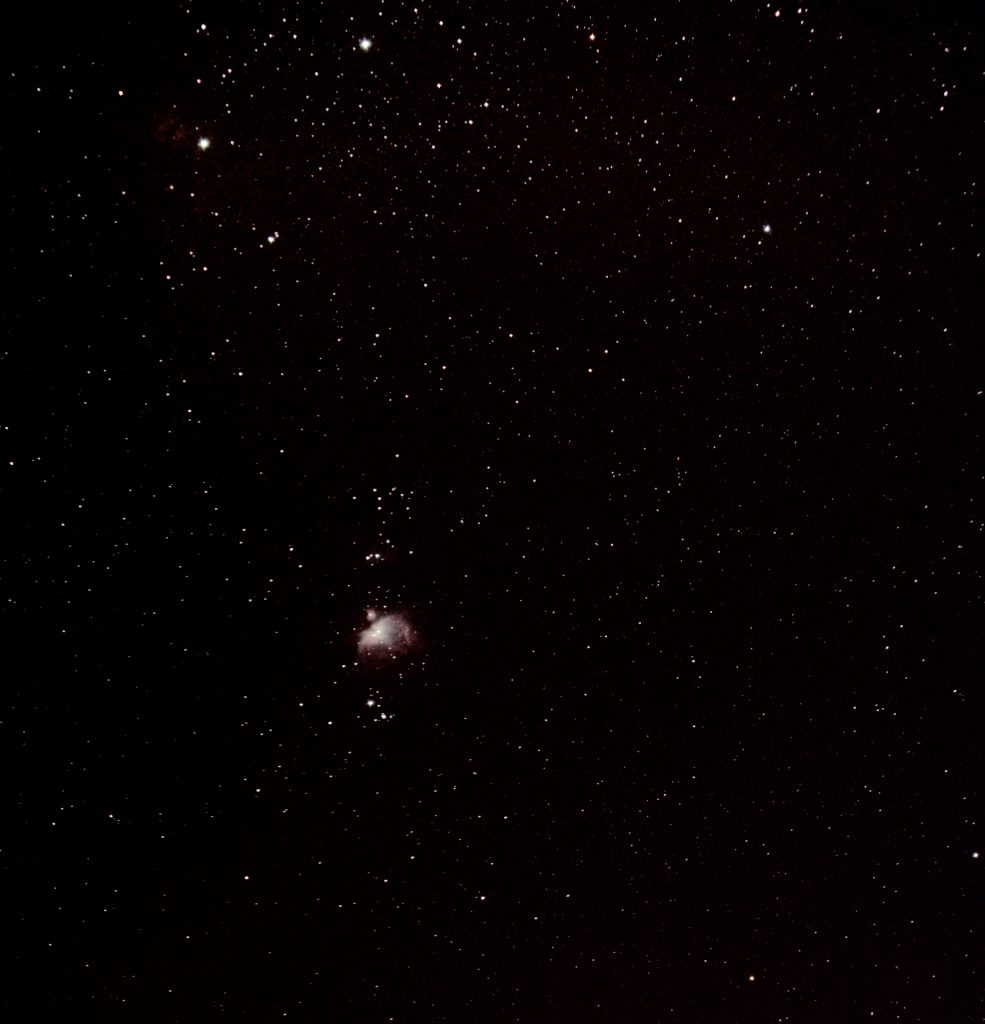Now I have had some nights with clear skies, which allowed me to put the new rig to the test. I went out on a very cold night with temperatures around -11 degrees Celsius, to test my new rig. I got the Star Adventurer GTi mount set up at polar aligned quite easily thanks to the polar alignment image in the SynScan app.
Why did I need to get a new mount? Well, it boils down to a matter of the rule of 500. If I use my old Tamron optics with the FTZ the rule of 500 states
\Delta t \approx \frac{500}{\mathrm{focal~length}}
So for the minimum focal length of 150 mm, the exposure time for the Tamron lens would be a maximum of 3,3 sec and at 600 mm the maximal exposure time can be 0.83 seconds. If I am not to produce star trails on the images. But with a mount that can follow the motion of the stars, I can achieve far longer exposure times. With good polar alignment, I should be able to achieve an exposure time of at least 30 seconds without problems.
Observations
After the first night out I experienced that I was getting tiny smears of the stars they were not perfectly round. Usually, you would expect this to be a result of poor polar alignment, but the artefact was there in both short exposure times and long exposures.

Apart from observing The Great Orion Nebula I also pursued an image of M45 The Pleiades again a great first target that is easy to spot and easy to see on the backscreen of the camera. To achieve proper focus I used a 3D-printed Bathinov mask from printables.com. The mask was designed for an 18-55 mm lens so I scaled the x- and y-dimensions of the stl-file before printing it – The results were as you can see in the images – quite satisfactory for the first try.

This stacked image of the Pleiades is made from 61 images as well as calibration files that were stacked in Deep Sky Stacker, and edited in Photoshop afterwards. You see the bright blue stars of M45 and some of the reflection nebula surrounding these very hot blue stars.
All in all this was considered to be a successful night out – despite the annoying fact that I have not achieved perfect round stars – due to a UV filter that is stock a bit skewed on the threading causing dispersion of the light through the lens.

